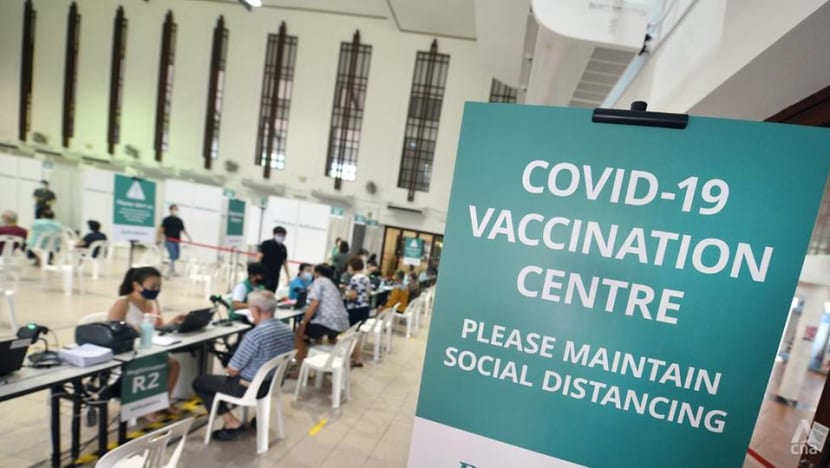Singapore to replace DORSCON colour coding with 4-tiered situational framework
The proposed four public health situational tiers would be introduced as part of an amended Infectious Diseases Act.

21 Mar 2023 02:56PM (Updated: 21 Mar 2023 04:54PM)
SINGAPORE: Singapore plans to make its Infectious Diseases Act (IDA) "less blunt" so that it can deal with a wider range of scenarios, said Health Minister Ong Ye Kung on Tuesday (Mar 21).
The legislation, which empowers the Ministry of Health (MOH) to take various public health actions for disease outbreaks, currently envisages only two states of public health with no gradations in between: Peacetime or emergency.
Under proposed plans, the amended IDA will have four public health situational tiers, replacing the current Disease Outbreak Response System Condition or DORSCON colour-coded framework.
The four tiers are:
- Baseline: This refers to a peacetime state
- Outbreak management: Where a pathogen of concern is detected and measures may need to be implemented urgently to manage disease outbreaks. These include contact tracing and quarantine, testing, border controls, and masking
- Public health threat: Where more stringent, widespread and longer-term control measures and restrictions are needed. These include various safe management measures and restrictions, up to and including a circuit breaker-like imposition
- Public health emergency: Where very stringent measures such as curfews and requisition of public health assets and manpower may be effected
“It is more intuitive to tell the public that there is an outbreak, a threat or an emergency. And the law spells out what measures could take place under each state,” he said.
Sharing his ministry’s experience during the pandemic, he said emergency powers under the IDA were too blunt and heavy compared to the public health measures and safe management measures needed at that time.
“While COVID-19 was a crisis and a serious threat, we did not declare a public health emergency," he said.
"We wanted to restrict group sizes, but not to control movements of people. We were not planning to impose curfews nor invoke the Requisition of Resources Act to marshal resources."
Instead, an ad-hoc legislation, which was recently extended for another year, was enacted to provide temporary, complementary powers to the IDA.
This allowed authorities to deploy a broad range of tools to tackle COVID-19 at multiple layers, without declaring a public health emergency, he said.
The amendments to the IDA will be introduced in Parliament later this year and once passed, authorities "can and intend to" rescind these temporary control orders, said Mr Ong.
“Will this prevent the panic buying that we saw during COVID-19 when we declared DORSCON Yellow and Orange? Not on its own,” he said.
“Whether a people panic during a crisis, depends a lot on the information they are getting, and whether they know what to do, to protect themselves and contribute towards societal resilience."
Mr Ong added: “If people listen to rumours, do not know what to do, they are likely to rush to the supermarkets and stock up on toilet paper and instant noodles.
“But I believe that with the experience of SARS, H1N1 and now COVID-19, the government knows much better what measures are necessary and appropriate, and the people of Singapore understand much better what to do in a pandemic crisis."
